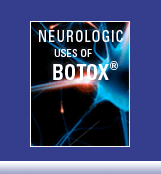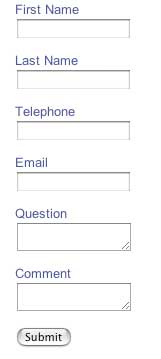![]()
 |
|
Acute Migraine Headache Treatments

Acute migraine treatments on this web site is separated into 3 parts. Prescription medications are covered on this page. Electronic devices (referred to a neuromodulation devices) are found here. And for those patients for whom acute migraine treatments are not working adequately, there is a section on migraine rescue in the office.
Triptans - the miracle drugs of the 90s
Triptans are the main stay of acute migraine therapy. There are 7 of them on the market and all of the tablets are generic. Their low cost (2 generics < $1 per treatment) will insure they continue to be first line for acute therapy.
Imitrex® (sumatriptan) was the first triptan brought to market. Imitrex is available as an injection, nasal spray, nasal powder and tablet. The injection is associated with the highest incidence of side effects, which can be annoying but are quite transient. Another problem with the injection is its relatively high price compared to the tablet. The tablet is the most convenient, easiest, and commonly used form of sumatriptan. The injection, however, is clearly the fastest migraine reliever on the market. An alternative to both the injection and tablet is the sumatriptan nasal spray, which sometimes works faster than the tablet. The combination of Imitrex with an NSAID is called Treximet® and is now also available as a generic. It is clear the combination of Imitrex with naprosyn works better than either by itself. Another form of sumatriptan that is available is called Onzetra®. It is a nasal powder that is blown into the nose. This results in a deliver device that is faster than the nasal spray with few side effects compared to the sumatriptan shots and even less likely to cause triptan side effects compared to the 100 mg sumatriptan tablet. The is also a new form of sumatriptan in a nasal spray called Tosymra® which generates shot like blood levels without a needle. Sumatriptan tablets are available for less than $1 per dose using Goodrx.com. All but the newest formulations - Onzetra® and Tosymra® are generically available.
The only other triptan offered in multiple treatment formulations is zolmitriptan. Zomig® (zolmitriptan) which comes in a tablet, dissolving tablet and nasal spray. The tablet and dissolving tablet are of equal efficacy with nearly identical times of onset for headache relief. By comparison, the Zomig nasal spray has an onset that is significantly faster than either Zomig tablet but not as fast as the Imitrex injection. The nasal spray may be effective in patients who do not respond to the tablets. Studies of the nasal spray included patients who were potentially already using Zomig® tablets and this may have biased the results. Without head-to-head data using patients who have never used triptans it is impossible to say with certainty which drug works faster.
Zolmitriptan should soon be available in a new formulation called Qtrypta® (submitted to FDA Dec 2019). It will use an Adhesive Dermally-Applied Microarray (ADAM) technology to deliver the medication. Pricing is to be determined but this appears to be the fastest non-shot technology available with an excellent migraine response rate.
The other triptans on the market; Amerge®, Axert®, Frova®, Maxalt® and Relpax® are only available in tablet form. Maxalt®, like Zomig® comes in a dissolvable. It is important to note that the dissolvable form is not absorbed more quickly into the bloodstream than the oral tablet.
The oral tablets are divided into two groups, the fast acting and slower acting. The faster acting group includes Axert®, Imitrex®, Maxalt®, Relpax® and Zomig®. The slower acting group includes Amerge® and Frova®. In practice, the time gap between the fast acting and slow acting is not that different.
The following table shows a comparison of the various triptans, the formulation that is available and their consumer characteristics.
| Name | Formulation | Desirable Characteristics | Other Characteristics |
|---|---|---|---|
| Imitrex® | Injection | Fast acting; highest response rate, most side effects | Most expensive of generics; most painful. |
| Imitrex® Zomig® Tosymra® |
Nasal spray | Good for oral vomiting; works a little faster than tablets (Imitrex®) to a lot faster than the tablet (Zomig®, Tosymra®). | Only Imitrex is generic. |
| Onzetra® | Nasal powder | Good for oral vomiting; faster than sumatriptan nasal spray; less side effects than sumatriptan 100 mg oral. | |
| Axert® Imitrex® Maxalt® Relpax® Zomig® |
Tablet | Good response to headache for lower cost. All fast acting tablets are similar in groups of patients but individual patient response may vary from drug to drug. All triptans listed are now generically available. | Other options work faster but will cost more. |
| Amerge® Frova® |
Tablet | Last longer than faster acting tablets. Generically available. | Does not work as fast. |
Maxalt® |
Dissolvable Tablet | Does not require water to swallow. | Does not work faster than regular tablet. |
Qtypta® |
Adhesive Dermally-Applied Microarray (ADAM) | Patch applied to skin | Submitted FDA Dec 2019 |
Patients not currently satisfied with their current migraine treatment have preferred the triptans. They have also been shown to be cost effective. A typical response for the fast acting tablets will be substantial pain relief in less than 2 hours. The sumatriptan injection and nasal powder can begin working in less than 15 minutes. Occasionally, the triptans are used in migraine prevention where the trigger is clearly identified and predictable such as with menstrual cycles for example. Triptans are much likely to work when the headaches are daily and work much less effectively when the headaches are nearly daily.
Which triptan should I use?
The answer is relatively simple. Patients should use the triptan that works best for them. Dr. Loftus begins with the cheapest (using goodrx.com as the source of pricing) and works his way up unless there is a need to bypass tablets.
Despite what others will claim, Dr. Loftus does not believe that any of the fast acting oral triptans can claim superiority to any other oral triptan medication. The study demonstrating Relpax® to have superiority to Imitrex has 2 design flaws. The most significant, in his opinion, is the inclusion of patients who previously used competitor's medication in the study. He has reviewed the Relpax® versus Encapsulated Sumatriptan studies in detail. Both current Imitrex® users who would probably actually favor Imitrex®, and prior users who would favor Relpax® are included. In addition, the Sumatriptan used has never been shown to be bioequivalent to brand name Imitrex® in migraine patients. The company and author have data that could address some of these concerns but will not share it.
Cambia
Cambia® is the only NSAID that is FDA approved to treat migraine. Its cost is in the same ballpark as the non-generic triptans. It has none of the typical triptan side effects so it is also an excellent therapy for those patients who cannot tolerate triptans for safety reasons. Cambia should be avoided in those patients that cannot tolerate or are told to avoid NSAIDs. Although no acute treatment is FDA approved for chronic migraine, NSAIDs like Cambia have been shown to continue to have efficacy in these types of patients where triptans tend to lose their efficacy.
Are triptans safe?
The triptans should not be used in patients with ischemic heart disease. All of the oral triptans cause approximately 5% of contraction of the coronary artery vessels. This is obviously not significant to patients unless a large percentage of the vessel is blocked by an obstruction in the artery known as a plaque. If any testing should be performed, each physician individualizes it for his or her patient. It should be noted the primary cause of heart attack in the age group of migraine patients is from plaque rupture, a sudden opening of the plaque and clot formation, and not from a slow narrowing of the artery.
Triptans are not thought to cause serotonin syndrome (despite what the FDA says). At meetings of hundreds of headache specialist, only one thinks she has seen a case of serotonin syndrome precipitated by a triptan. The serotonin receptor that triptans bind to - 5HT1B and 5HT1D are not the receptors felt to be most important for this syndrome.
Medication Overuse Headache occurs when an acute medication is used so often that it triggers additional headaches. This does occur with triptans but it is relatively infrequent. Maybe a few percent in clinical practice. Therefore, Dr. Loftus will commonly allow patients to overuse triptans (to improve quality of life) and periodically check for overuse by restricting triptans for one steady week (typically using dihydroergotamine during that week). Triptans rebound lasts an average of 3 days
Oral CGRP receptor medications - Ubrogepant (Ubrelvy®) - new class released 2020
Ubrogepant (Ubrelvy®) is an oral CGRP receptor antagonist. This class of drugs is referred to as Gepants although Dr. Loftus likes to refer to them as SMACRs (small molecules against CGRP receptor). CGRP is released by some neurons of the trigeminal nerve and land on other neurons on the trigeminal nerve and appear to help maintain a migraine. Ubrogepant (Ubrelvy®) has been demonstrated to treat acute migraine in multiple trials. Its speed and effectiveness is similar to triptans. It does have some advantages compared to triptans in that it will not cause vasoconstriction. It will, however, block vasodilitation. There are clearly patients for whom triptans do not work for which Ubrogepant (Ubrelvy®) will work well. In addition, the company claims there is no evidence of medication overuse headache associated with this medication. Medication overuse headache is a situation where taking the acute medication for headache leads to more headaches. Current pricing is targeted at 10 pills per month (50 mg or 100 mg). Some will certainly have their patients split the 100 mg tablet (not recommended by the manufacturer) and use it for more than 10 headache days per month (considered off label).
Ditan - Lamiditan (Reyvow®) - new class released 2020
Ditans like Lamiditan (Reyvow®) are medications that targets the 5HT1F receptor. Like the triptans, this drug targets a serotonin receptor. It does not, however, target the serotonin 5HT1B receptor and therefore does not cause vasoconstriction of blood vessles like the triptans. It does not cause vasodilatation and does not block CGRP related vasodilatation which may be important in other pasts of the body. It does affect mental alertness and therefore one should not drive after taking the medication for 8 hours. This was determined by simulated driving at 2 hours (maximum drug level) where a normal person with a blood alcohol of 0.06% (not quite drunk) was used as the control. Those who were impaired did not feel impaired and therefore it is important that they not try and judge if they are safe to drive but simply not drive for the 8 hour prohibition as recommended. This will obviously limit its use. There are also warnings about serotonin syndrome and medication overuse headahe but these warnings appear to be the same over blown issue that we frankly do not see with triptans but seem to result in under utilization of the triptan medications. Despite these limitations, I expect the medication will be very use for those patients that do not respond to triptans or SMACRs.
Dihydroergotamine (DHE® and Migranal®)
A very old acute migraine medications is dihydroergotamine. There is an injectable form (DHE-45®) that can be given IV, SQ, or IM. The nasal form of DHE is called Migranal®. The response of the migraine to Migranal® is similar to the fast acting oral agents. Similar to the triptan drugs, Migranal® treats the entire migraine and its accompanying symptoms. It also seems to work well for patients who have failed multiple prior triptans. The only significant side effect is some nasal stuffiness. Injectable DHE is less expensive than nasal DHE but requires the patient to self-inject the medication. Unfortunately, Migranal® and injectable DHE are some of the older drugs that have risen in cost fairly dramatically. They are both single source generics.
Butalbital and Opioids
Butalbital containing products and opioids should be avoided. Both of these lead to medication overuse headches and appear to make it less likely for migraine preventatives to work.
Coming Soon - Additional Oral CGRP medications - Rimegepant, Atogepant
Rimegepant (Biohaven) is an oral CGRP receptor antagonist that is being initially targeted for acute migraine but is also being studied for migraine prevention by taking it on a schedule (every other day). CGRP is released by some neurons of the trigeminal nerve and land on other neurons on the trigeminal nerve and appear to help maintain a migraine. Triptans and the new monoclonal antibody medications target this pathway. Triptans help to decrease release of the CGRP from the neuron. Rimegepant is designed to block the CGRP receptor to help end a migraine. It does not cause vasoconstriction (like triptans and dhe)) but it does block some vasodilitation. Some far, there is no public data related to its ability to treat prior triptan failures. From a business standpoint, this is critical as this is its largest market. Hopefully, we will see it in 2019 or 2020
Ubrogepant (Allergan) is another CGRP receptor antagonist. It has been demonstrated to treat acute migraine in multiple trials according to Allergan press releases. Like Rimegepant, it will not cause vasoconstriction but will block vasodilitation. Its business model will depend upon its ability to treat prior triptan failures. Allergan is expected to file for approval to the FDA in 2019. While Ubrogepant could act as a migraine prevention agent if taken frequently enough, it is unlikely Allergan will attempt this. Instead, Allergan is also developing Atogepant to fulfill this role. It too is a CGRP receptor antagonist but all of its public testing has been geared to using it as a preventative. It will presumably compete against the injectable monoclonal antibody drugs against CGRP (MAAC - Ajovy, Emgality) or its receptor (MAACR - Aimovig)



